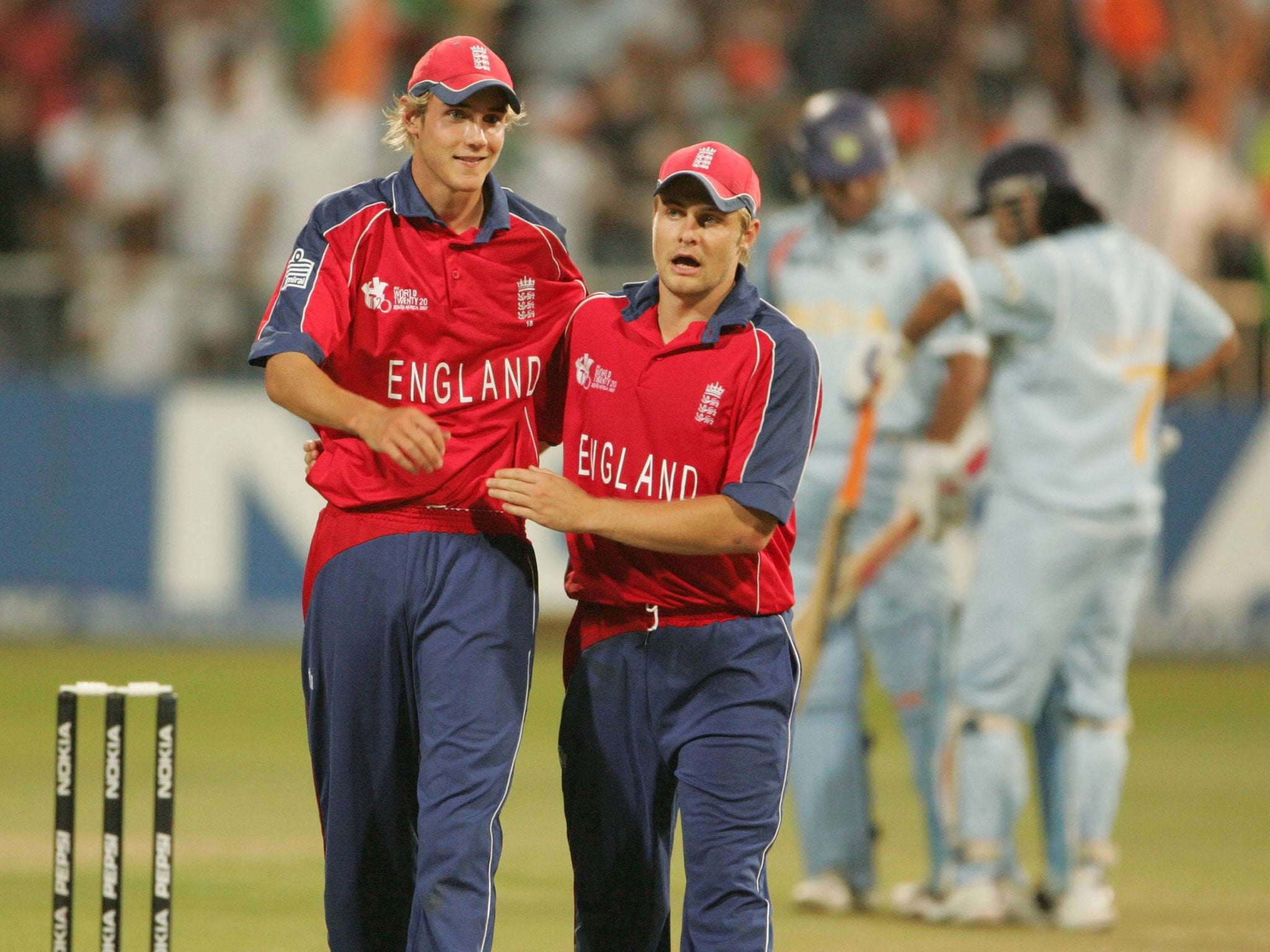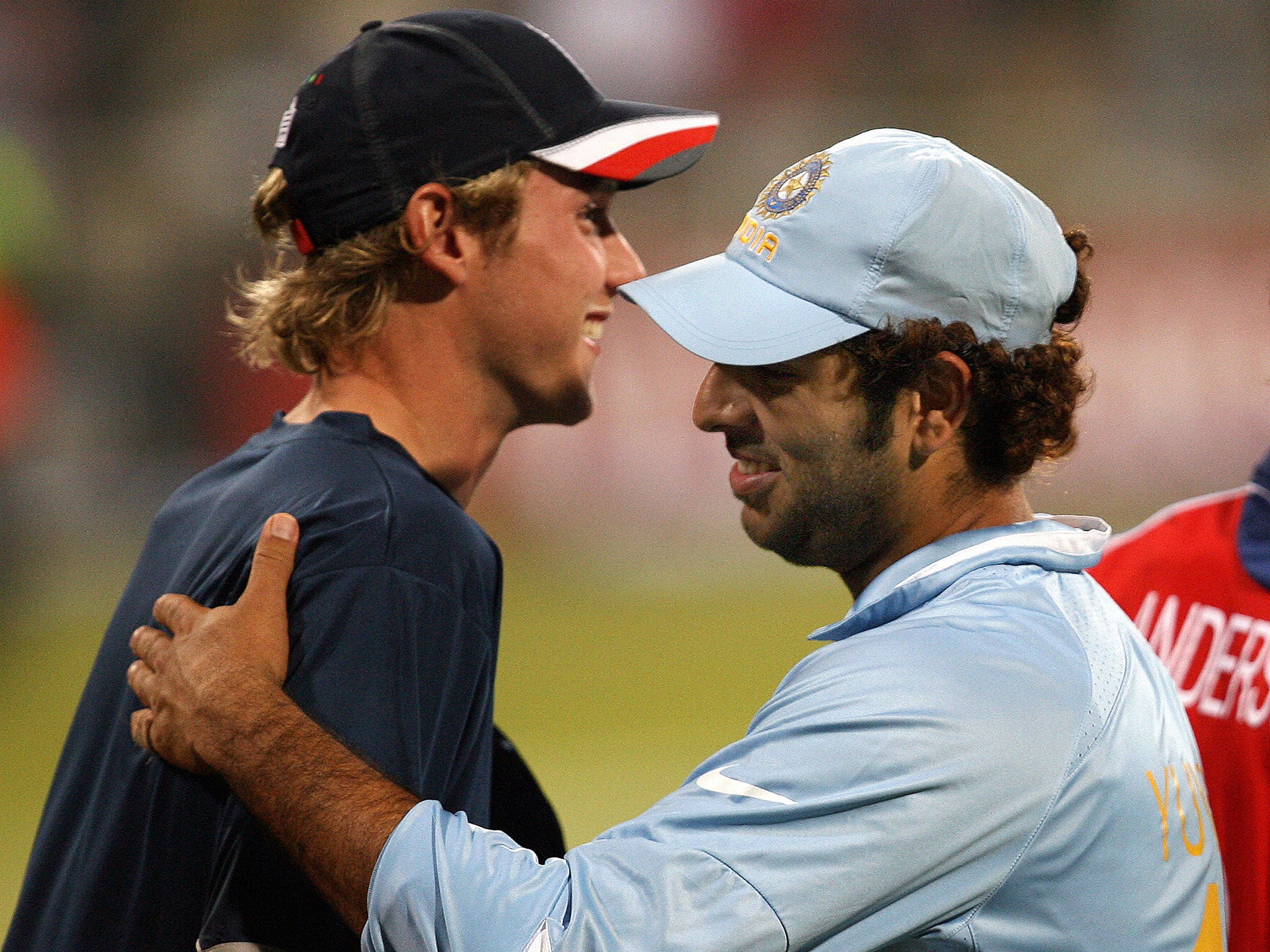World Twenty20 2016: England have struggled with this format in the past - now we will see if they still are
For the first World T20 in 2007 England cobbled together a squad and were eliminated early on. They have been playing catch-up ever since. So, with the next tournament starting next week, who’s giggling now?

Your support helps us to tell the story
From reproductive rights to climate change to Big Tech, The Independent is on the ground when the story is developing. Whether it's investigating the financials of Elon Musk's pro-Trump PAC or producing our latest documentary, 'The A Word', which shines a light on the American women fighting for reproductive rights, we know how important it is to parse out the facts from the messaging.
At such a critical moment in US history, we need reporters on the ground. Your donation allows us to keep sending journalists to speak to both sides of the story.
The Independent is trusted by Americans across the entire political spectrum. And unlike many other quality news outlets, we choose not to lock Americans out of our reporting and analysis with paywalls. We believe quality journalism should be available to everyone, paid for by those who can afford it.
Your support makes all the difference.For a country with the longest established domestic Twenty20 competition, the format’s first global showpiece should have been a walk in the park for England. Instead, perhaps predictably, Paul Collingwood’s side exited the 2007 World Twenty20 with their heads bowed.
With a squad thrown together at the last minute and very little preparation time, England arrived in South Africa not really knowing what to expect from a competition that not everyone appeared to be taking entirely seriously.
India, for example, arrived without the likes of Sachin Tendulkar and VVS Laxman, while Kevin Pietersen touched down on home soil having described T20 as being a “silly game” with “silly shots”.
The next T20 World Cup starts next week and both India and Pietersen have clearly changed their view since then but KP’s description reflected the view of many players on the county circuit.
Chris Tremlett, a member of that first World T20 squad, recalls: “It came in for the counties in 2003 but for two or three years it was treated as a bit of laugh, almost like a bit of an extra – a good excuse to have a bit of a rest between the Championship [matches].”
Under the guidance of Peter Moores in his first spell in charge of the national team, England had assembled an ill-considered squad which reflected the muddled thinking of the time.
Pietersen and Andrew Flintoff were obviously worldwide stars at the time but it was lucky the players’ names were printed on the back of their shirts because a global audience might otherwise have struggled to identify the likes of Vikram Solanki, James Kirtley, Chris Schofield and Darren Maddy.

Jeremy Snape was hardly a household name either but he had at least played in a Leicestershire side that could justifiably argue to have been the most successful T20 side in county cricket at the time.
“We had a strategy at Leicestershire which was really an attempt to control the chaos,” says Snape, who would go on to work alongside Shane Warne with the Rajasthan Royals in the IPL.
“It was a very fast-moving game with a lot of variables but at Leicester we really tried to minimise those and create a game plan that made us more consistent than most. We had some success too because we reached the first four finals.”
That sounds like a strategy that England could have done with copying. Unfortunately, they clearly had not paid too much attention to events at Grace Road. “Moving into the England team, I was surprised that there was more focus and strategic thinking in that Leicester side [than with England],” says Snape.
“At Leicestershire it wasn’t about having three hitters at the top of the order, it was about having a rotator who could work with them at high tempo. For me, there was a lag between what England were trying to do and what the county game had already found out.”
Strangely enough England started the tournament well, beating a Zimbabwe team who, in turn, had just caused a seismic upset by putting Australia on their backsides in the opening match.
A win for England against a chastened Australia in Cape Town would have seen their great rivals heading home at the first hurdle and Pietersen, for one, was eyeing revenge.
“We have a great chance to send Australia home early,” he said. “They humiliated us throughout last winter and it would be nice to give them a bit of humiliation in return.”
The Aussies, though, were having none of it and chased down England’s paltry score of 135 in just 14.5 overs. “I bowled my one over of the tournament and saw it disappear for 17,” says Kirtley. “We were never in the game.”
Now, of course, there may just be occasions in a modern T20 match when a captain would breathe a sigh of relief if an over went for 17 but back then the economy bar was set far lower. “I remember going for 70 off 10 overs in a one-dayer against New Zealand the previous winter and everyone was up in arms, saying I should never play ODI cricket again,” says Tremlett.

“If you went for 40 off four overs in T20 cricket it would be the same – you would probably never get another match. Now if you go for 70 off 10 or 40 off four then you’ve done a decent job.”
He is not wrong. In contrast to the ludicrous feats of hitting we can expect this month in India, the first World T20 looked positively tame.
The highest individual score came from the bat of Chris Gayle (who else), who smashed 117 off 57 balls for the West Indies against South Africa, but that was the only century of the entire tournament. Such was the respect afforded bowlers at the time, that Pakistan’s paceman Umar Gul even managed to record the astonishing figures of 5 for 6 off three overs against New Zealand at Durban.
How a young Stuart Broad must have wished Yuvraj Singh had afforded him the same treatment on the same ground the following week.
“I remember fielding at third man when the first three balls of his over went for six,” says Tremlett. You just get a feeling that something incredible is happening and I pretty much knew his next three were going to go the same way.” Cricinfo’s ball-by-ball commentary captured Broad’s mood perfectly as he prepared to bowl the final delivery of the over, describing him as “quizzical and miserable”.
Ultimately, Broad’s over going for six sixes made little difference, with England’s interest in the competition having long been ended as a result of defeats against New Zealand and Pakistan in the Super Eights stage of the tournament.
What Yuvraj and his compatriots did do, though, was to ignite a flame for T20 that is now burning brighter than ever. “India is now the heartbeat of world cricket,” says Snape, now a sports psychologist for Premier League football club Crystal Palace. “India has the IPL and the passion of millions and millions of people. With that first IPL season following soon after, that first World T20 was really the perfect preview. India saw the light and just took the format and ran with it.”
England, meanwhile, were fumbling around in the dark. We will find out this month if they still are.
Join our commenting forum
Join thought-provoking conversations, follow other Independent readers and see their replies
Comments